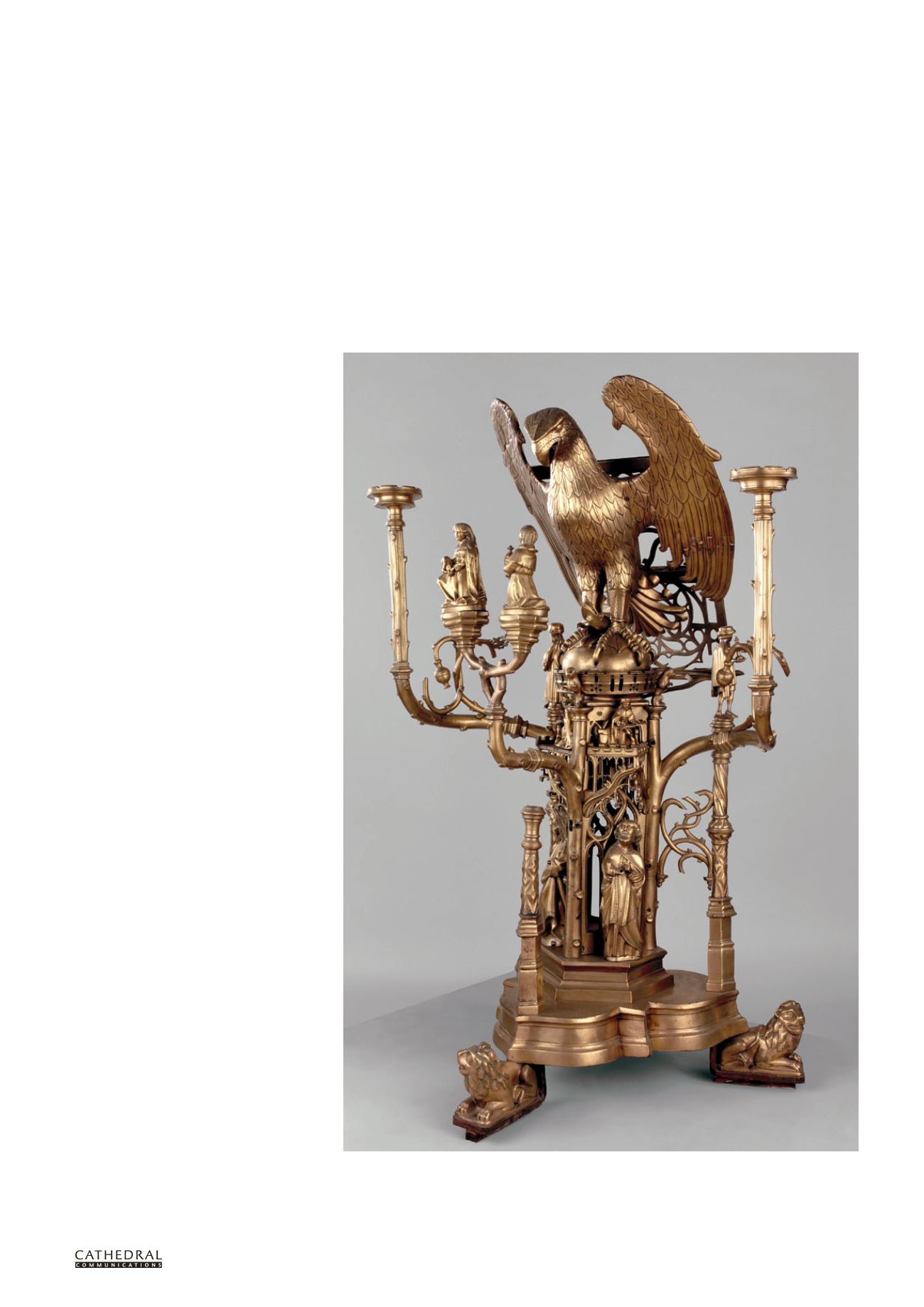

BCD SPECIAL REPORT ON
HISTORIC CHURCHES
24
TH ANNUAL EDITION
23
BRASS EAGLE LECTERNS
IN ENGLAND
Marcus van der Meulen
I
N THE Anglican church interior the
brass bookstand with a reading desk
in the shape of an eagle is part of
the standard fittings. The freestanding
bookrest is used for supporting the Bible,
for readings from the scriptures or as
a minor pulpit. Most are creations of
the Victorian age, output from a serial
production of ecclesiastical furnishings
on an industrial scale.
Inspiration for these Victorian
bookstands came from the eagle
lecterns of the late 15th and early 16th
century, many of which had vanished
during the Reformation’s great purge
of ecclesiastical ornament. The revival
was prompted by a series of discoveries.
At Oundle, Northamptonshire, the
eagle lectern reappeared from the river
Nene when it was dredged in the early
19th century. Around the same time
a lectern was found in the marshes
outside Isleham, Cambridgeshire,
and another was dug up in the
churchyard of Snettisham, Norfolk.
In the 1830s a lectern unlike any other
in the country was found buried in
the bishop’s garden in Norwich. This
pelican lectern was restored, receiving
some 19th-century additions at the
same time, including three statuettes
representing the priesthood. Finally,
in 1841 it was returned to its pre-
Reformation home, Norwich Cathedral.
In the same year the Church of
St Chad, Birmingham, designed by
AWN Pugin, was inaugurated. Later
raised to cathedral status (the first
Catholic cathedral in England since the
Reformation), the ecclesiastical space
designed by Pugin was fashioned to the
principles set out in his influential books
Contrasts
(1836) and
The True Principles
of Pointed or Christian Architecture
(1841). Pugin’s books laid the theoretical
foundations for the Gothic Revival
and envisioned a return to the pre-
Reformation church interior.
The ecclesiastical space of St Chad’s
was adorned with fittings predating
The Birmingham lectern acquired by the Earl of Shrewsbury for the church of St Chad by Augustus Pugin,
today in The Met Cloisters, part of the Metropolitan Museum of Art in New York
(Photo: Metropolitan Museum of Art, The Cloisters Collection, 1968)


















